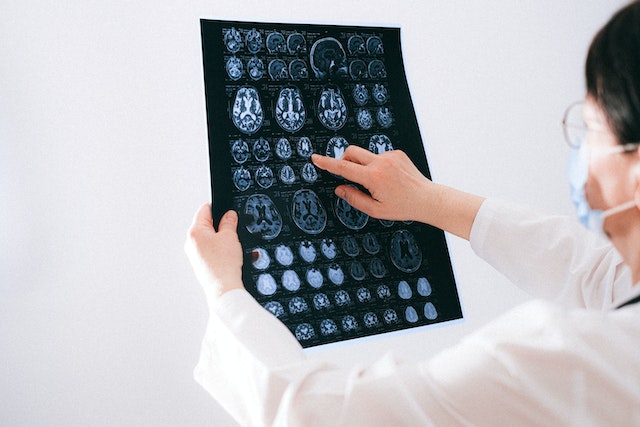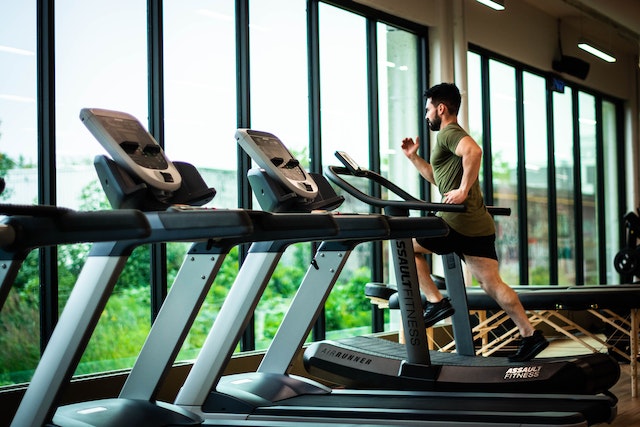You’ve probably heard about light therapy, but have you heard about the magic of 40 Hz light? It’s not just any light; it’s a specific frequency that’s causing a buzz in the medical community, especially regarding Alzheimer’s disease. This kind of light falls into the gamma wave band, a frequency that our brains love. The question is, how can a simple light frequency do anything for a complex condition like Alzheimer’s? Well, stick around, and you’ll find out!


Jesse Gomez
Jess Gomez leads the Customer Engagement function at OptoCeutics and has more than 20 years of healthcare experience.
Table of Contents
1. What is 40 Hz light therapy? And, how is it related to Alzheimer’s Disease?
2. What is the science behind 40 Hz?
3. What are the causes and Symptoms of Alzheimer's disease?
4. What is a pioneering study?
5. How does 40 Hz lighting affect your brain?
6. What are the cognitive functions of gamma waves?
7. How Does 40 Hz Light Work?
8. What is the 40 Hz light flicker?
The Science Behind 40 Hz Light
Now, let’s get a bit scientific. Our brains operate on different wave frequencies, from the slow delta waves during deep sleep to the fast-paced gamma waves when we’re solving a puzzle or deeply focused. The 40 Hz light resonates with these gamma waves. It’s like finding the right radio frequency – when you hit 40 Hz, you’re tuning into your brain’s favorite channel. But why is this important? Because this particular frequency might hold the key to unlocking new treatments for Alzheimer’s.
Key Properties of 40 Hz Light
Imagine a light that not only brightens the room but also potentially brightens the mind. That’s 40 Hz light for you. It’s special because it aligns with gamma waves, which are crucial for cognitive functions like attention and memory. It’s not just about lighting up a space; it’s about lighting up brain cells in a way that could counteract some of the effects of Alzheimer’s. Pretty cool, right?
Alzheimer’s Disease: An Overview
Alzheimer’s is more than just forgetting where you left your keys. It’s a disease that slowly takes away a person’s memories, their ability to think clearly, and even their essence. It affects millions of people and, let’s be honest, it’s heartbreaking. Families watch as their loved ones slip away, bit by bit. Understanding this disease is the first step in exploring how something as simple as light could make a difference.
Understanding Alzheimer’s Disease
Alzheimer’s isn’t just a part of getting older; it’s a disease that disrupts the brain in profound ways. It starts slowly, maybe with forgetting recent events or conversations, and gradually gets worse. The person you once knew starts to change, becoming more confused and withdrawn. It’s a tough journey, not just for the person affected, but for everyone around them.
Causes and Symptoms of Alzheimer’s
So, what causes Alzheimer’s? It’s like a storm in the brain, where proteins build up and form plaques and tangles, disrupting communication between brain cells. This chaos leads to symptoms we associate with Alzheimer’s: memory loss, confusion, and changes in personality or behavior. It’s like watching someone you love get lost in their own mind, and there’s nothing you can do about it. Or is there?
The Link Between 40 Hz Light and Alzheimer’s
Here’s where 40 Hz light enters the scene. Research suggests this light frequency might interact with the brain in a way that helps reduce those harmful plaques. It’s like having a broom that can sweep away some of the brain’s clutter. Could this be a beacon of hope for Alzheimer’s patients and their families?

Pioneering Studies and Research
Several studies have lit up the possibility that 40 Hz light could be a game-changer. These studies have shown promising results, not just in labs with test tubes but in real-life scenarios with actual patients. We’re talking about reduced symptoms and improved cognitive function. It’s still early days, but the future looks bright (pun intended!).
How 40 Hz Light Affects the Brain
This therapy is thought to stimulate the brain’s gamma wave activity, which is vital for cognitive processes like memory and attention. Think of it as a gym workout for the brain, strengthening those areas weakened by Alzheimer’s. It’s not just about slowing down the disease; it might actually help the brain regain some of its lost functions.
Gamma Waves and Cognitive Function
To comprehend the significance of 40 Hz light, we need to delve into the brain’s electrical activity. The brain operates through the coordinated firing of neurons, which generate electrical rhythms known as brainwaves. These brainwaves come in various frequencies, each associated with different cognitive functions.
Gamma brainwaves, oscillating at approximately 40 cycles per second (40 Hz), are of particular interest when it comes to cognitive health. Gamma waves are linked to memory, attention, and learning abilities. In a healthy brain, these waves synchronize and coordinate the activity of different brain regions, creating a harmonious symphony of electrical signals.

Alzheimer’s Disease and Disrupted Gamma Waves
In Alzheimer’s disease, this harmonious symphony begins to unravel. Research has shown that individuals with Alzheimer’s often exhibit disrupted gamma brainwave activity. The synchronization between brain regions deteriorates, leading to cognitive impairment. Scientists believe that this disruption plays a crucial role in the development and progression of Alzheimer’s disease.
How Does 40 Hz Light Work?
The mechanism behind 40 Hz light therapy is quite remarkable. When the brain is exposed to rhythmic visual stimuli at 40 Hz, it responds by aligning its electrical activity to match this frequency. In essence, it helps “reset” the disrupted gamma brainwaves.
Potential Benefits of 40 Hz Light Therapy
Imagine a world where Alzheimer’s could be managed with light. That’s the potential of 40 Hz light therapy. It’s non-invasive, it’s easy to administer, and it could significantly improve the lives of those affected by Alzheimer’s. It’s not a cure, but it could be a powerful tool in our arsenal against this devastating disease.

Current Applications and Research
Today, 40 Hz light therapy is making waves in clinical trials and experimental treatments. Researchers are diving deep into its effects, safety, and how it can be best used to help Alzheimer’s patients. We’re seeing this therapy move from the lab to the real world, and the results are promising.
Case Studies and Clinical Trials
From small-scale studies to extensive clinical trials, the journey of 40 Hz light therapy is picking up pace. Each case study adds a piece to the puzzle, helping us understand how this therapy can be integrated into Alzheimer’s treatment plans. It’s a beacon of hope, lighting the way to a better understanding of this complex disease.
Practical Applications of 40 Hz Light
What does this mean for you and me? In the future, 40 Hz light therapy could become a regular part of Alzheimer’s care, maybe even something that can be administered at home. It’s about making treatment more accessible and less invasive, giving families and patients more control over their journey with Alzheimer’s.
Future Prospects and Challenges
The future is bright, but it’s not without its challenges. How will 40 Hz light therapy fit into the broader landscape of Alzheimer’s treatment? What are the long-term effects? The path ahead is filled with questions, but also with possibilities. It’s a journey worth taking, especially if it leads to new ways to fight back against Alzheimer’s.

Enhance your brain performance through the power of light.
Comfortable and easy to use 40Hz light therapy to support and improve your brain function.
View Our LightChallenge with 40 Hz Flickering Light
Often, 40 Hz flickering light comes in the form of regular strobe light. This strobe light is a white light that switches ON and OFF, leading to a highly irritating and visible flickering. This may cause eye strain and makes the experience uncomfortable, adding undesirable side effects, such as headaches, nausea, and seizures – at the worst, for some.
Potential in Alzheimer’s Treatment
The potential of 40 Hz light therapy in Alzheimer’s treatment is immense. It’s a new frontier, a different approach that could change how we manage the symptoms and progression of the disease. It’s not just about adding years to life but adding life to years, especially for those affected by Alzheimer’s.
Limitations and Ethical Considerations
Like any new therapy, 40 Hz light comes with its own set of limitations and ethical questions. How do we ensure it’s safe for long-term use? How do we make it accessible to everyone who needs it? These are important questions that need answers as we move forward.
Conclusion
Alzheimer’s disease is a formidable adversary, but the innovative approach of 40 Hz light-based brain stimulation offers a glimmer of hope. By targeting disrupted gamma brainwaves, this therapy aims to restore cognitive function and slow the progression of the disease.
While more research is needed, the potential benefits of 40 Hz light therapy are undeniable. As we continue to explore new frontiers in Alzheimer’s research, this approach serves as a beacon of promise for those affected by cognitive decline. In the quest to understand and combat Alzheimer’s disease, 40 Hz light may very well be a shining light of hope.
Learn What Others Have Experienced with EVY Light
See how others have achieved a sharper mind by activating their gamma brainwaves in combination with maintaining a healthy lifestyle.
Curious to learn more?
Take a look at some of our other blog posts to dive into the science of living a healthy and happy life. We at OptoCeutics wish you a great reading journey beyond 💜










































